Remember Robowars, where two robots had to bash each other to pieces? That is what the organisers of Droneclash were thinking of when they came up with their drone fighting event. And it is not only for entertainment.
Flames, rockets, waterballoons: everything was allowed in the droneclash. But it was not only the spectacle that could get you on stage. (Photos: Roos van Tongeren)
In a hangar at the old military airport of Valkenburg, almost unreachable by public transport and in the middle of the flatlands of the Dutch countryside, is where Droneclash is held. While the six teams are preparing their fighters and queens, the supporters (mostly press and family) are getting hamburgers and soup at the only food stand at the event. An arena is created in the middle of the hall: two squares with thick plastic curtains to protect the spectators from getting burned by flames or hit by loose propellers.


Get the queen down
The rules are not simply to crash one drone into another. A team consists of three drones: one queen and two fighters. The fighters score points by hitting each other and manoeuvring each other into boxes or pushing each other to the ground. Points can only be scored while the queen is in the air, so the best strategy is to go for the opponent’s queen first before hitting the other fighters. But before the fighters get to the queens, they have to fly through a tunnel, the ‘Hall of Doom, Destruction and Death’ where they have to contend with obstacles like mist, stroboscope lights and flying nets.
A few weeks before the match, Delta interviewed Stefan Juffermans and Xenia Wesdijk of the Deceptidrone team. Their team is flies first today. In no time, their queen is down. Nobody knows exactly what happened, except for the judges. Every team member has one judge and there are a few judges to oversee it all. “I think we scored fifty points,” says Juffermans. “But it would be better if there were points on the screen, so we could see what is happening,” adds Wesdijk.
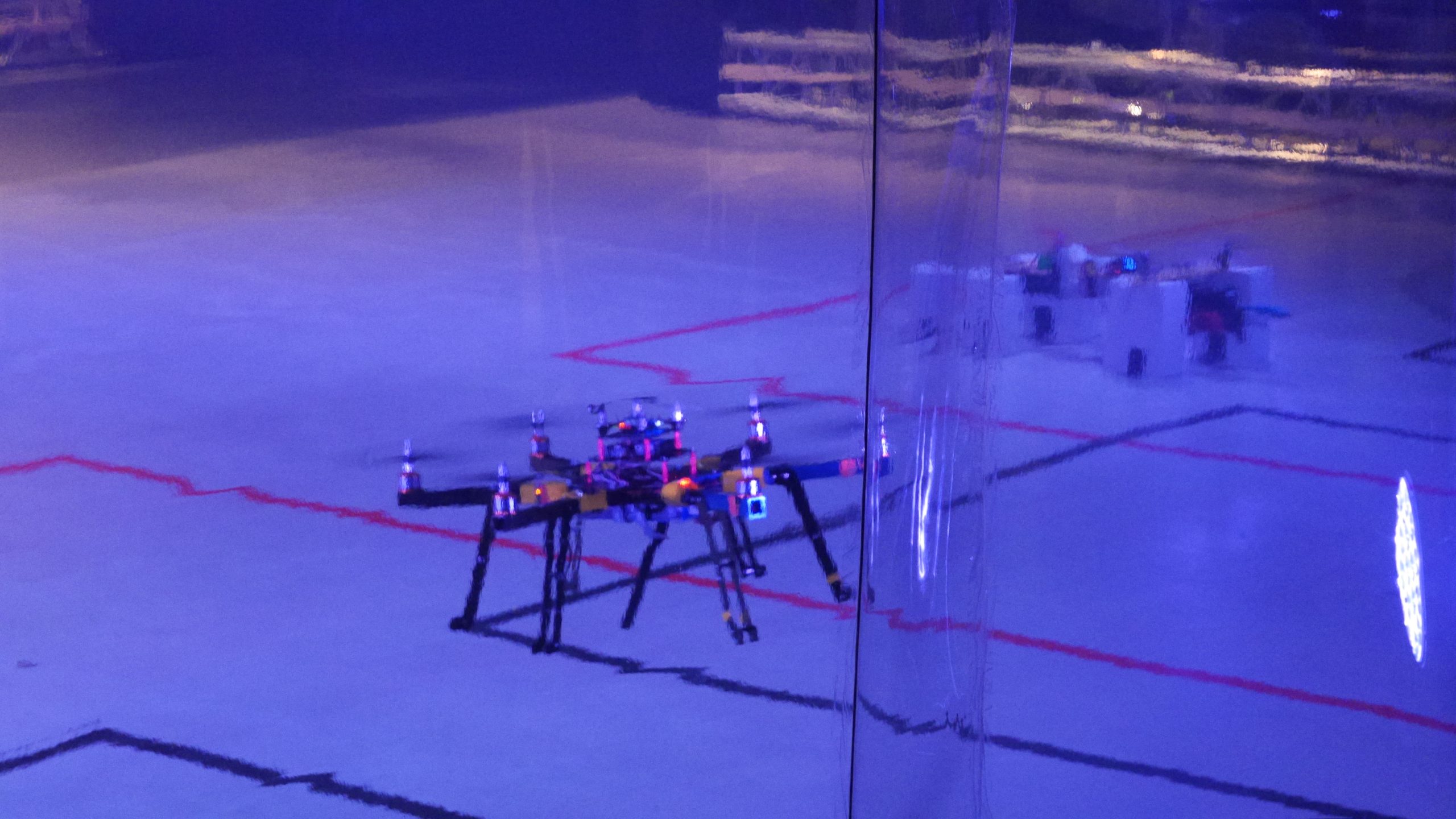

Drone Valhalla with a serious side
While waiting for the next match, the supporters walk around the hangar and check out the stands around the arena. Drone shops use this event as a huge shop display where everyone can try out different drones. Besides that, TU Delft is demonstrating its Delftacopter and Delfly; the police is there; there is an obstacle course where you can fly a mini drone through lighted hoops; and there is information about drone detectors.
The underlying reason for this drone event is to find new ways to take down drones. “Drones can be hazardous, for example around helicopter landings,” says Bart Remes, one of the organisers. “Of course we organised the battles for fun, but we also want young people to think about new ways to take down drones. This is why we have an innovation prize besides the usual first, second and third prizes.”
Deceptidrone gets hacked
Although they were taken out so soon, the Deceptidrone team has scored some points and has to compete against TFBCC, ‘the freaking big combat copter’, for the third and fourth place. The TFBCC team has drones resembling huge flying blue, fabric mosquito nets. Instead of three players, they have five. The two extra players hack their opponent’s signal between their drones and console. They then take over the other team and drop their drones to the ground.
“This is very interesting for the police,” says TFBCC’s Christophe de Wagter. “When you take over a drone, you can safely land it on the ground.” But you can’t just hack all the drones. “In the first match we accidentally hacked our own drone, so we lost. There are so many drones in this hall, you don’t want to drop them all at the same time. To see our target drones, we checked their starting times.”
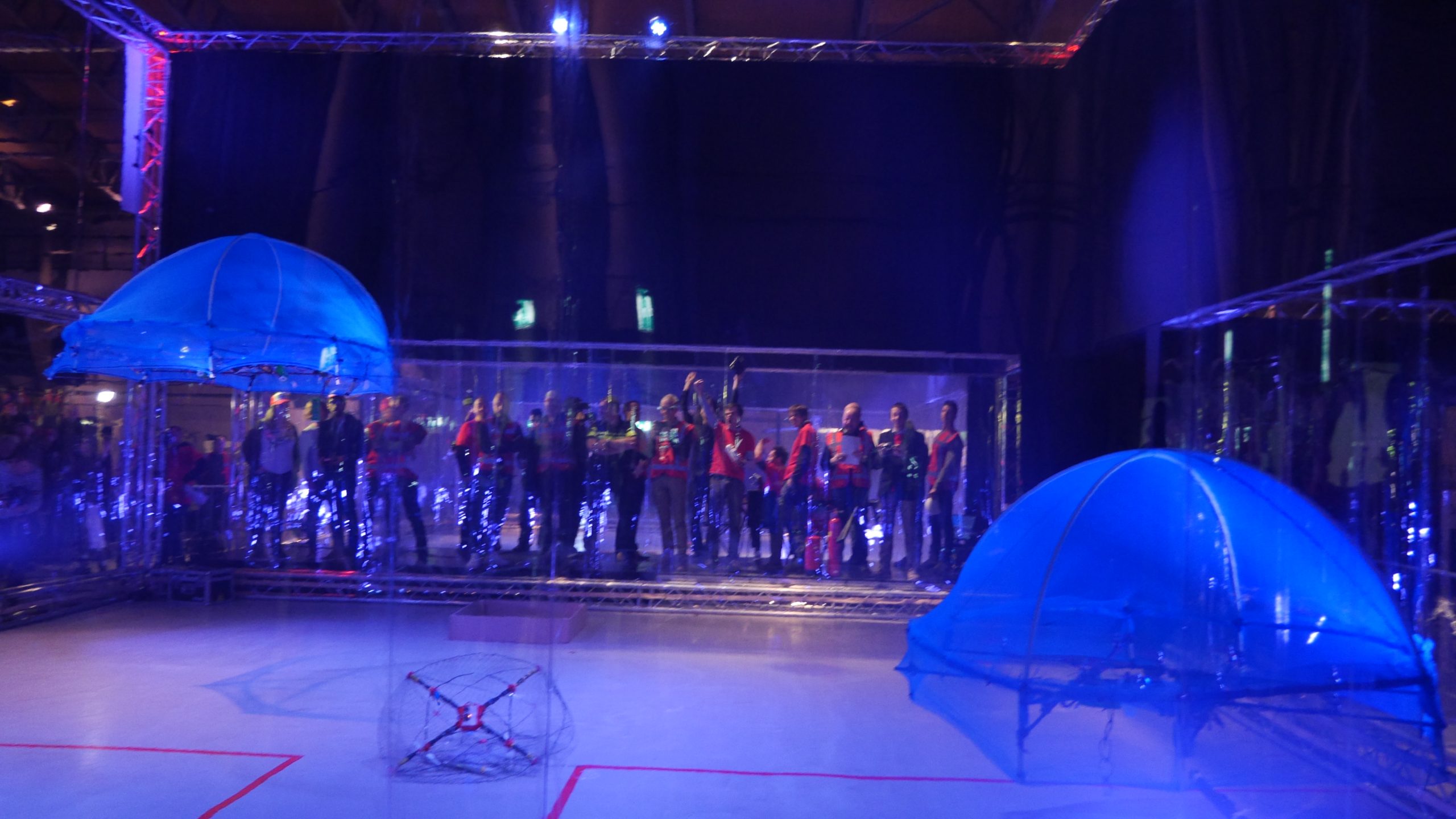

TFBCC’s actions show the need for good security in drones. If the police can hack drones, hackers can also take over the drones of the police. “The technology we use now to control our drones was designed for the model planes that existed years ago. A few elderly men crafted small planes and it took them years to learn how to fly. Now, millions of drones are sold and five-year-olds can fly them. This can be risky, and it is important that the drones can’t be taken over as easily as we can do it right here.”
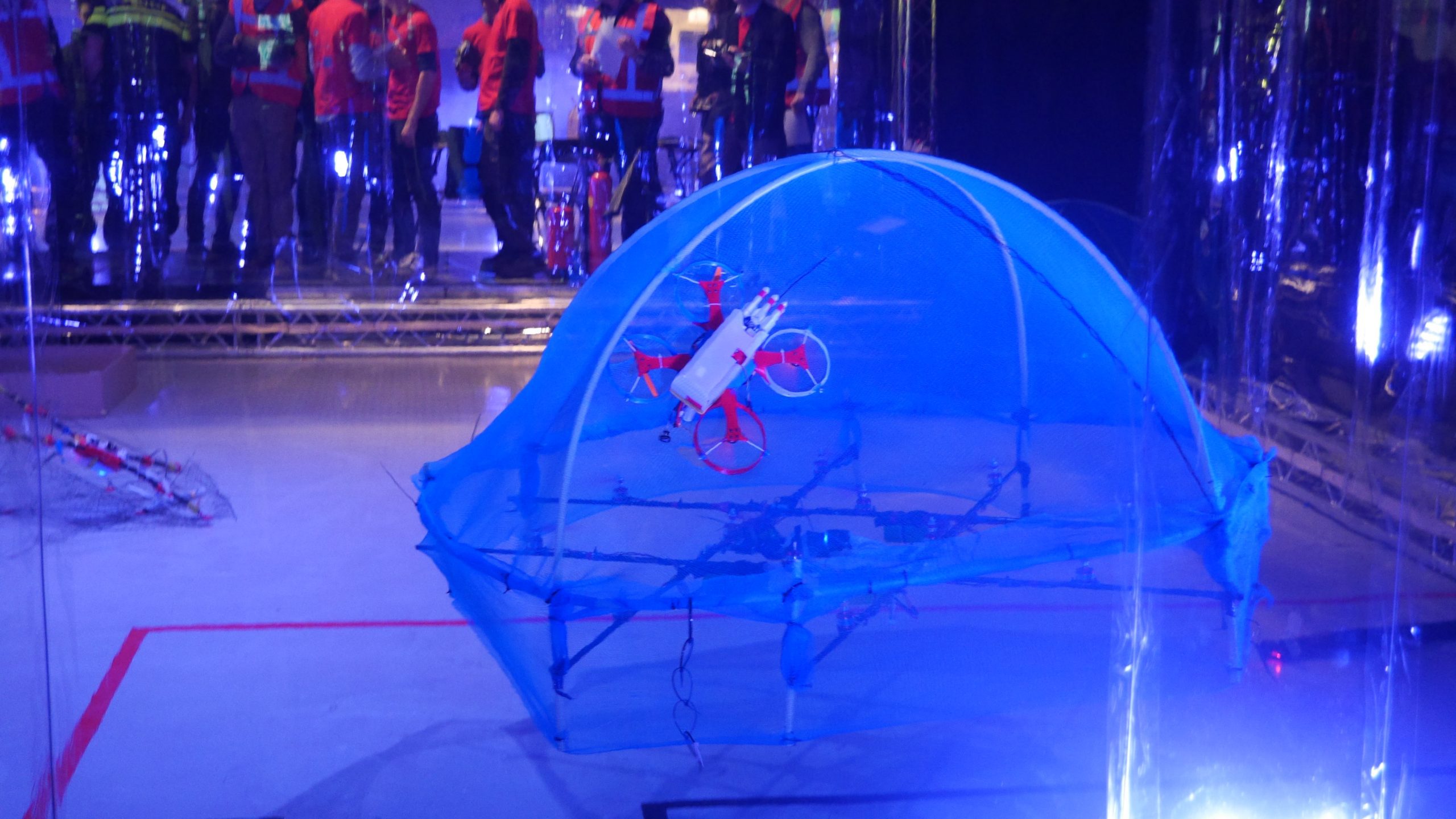

And easy it is. After a few breathtaking moments, one of TFBCC’ blue net drones enters the area of the queens and knocks down the Deceptidrone’s queen. “My drone was hijacked,” says Wolf Fisscher of Deceptidrone. “At one point it was all or nothing. I dropped my drone on TFBCC’s queen and pushed it to the ground with all the power my drone had.” That worked, but it couldn’t save the game. TFBCC won the match and ended as third, leaving Deceptidrone in fourth place.
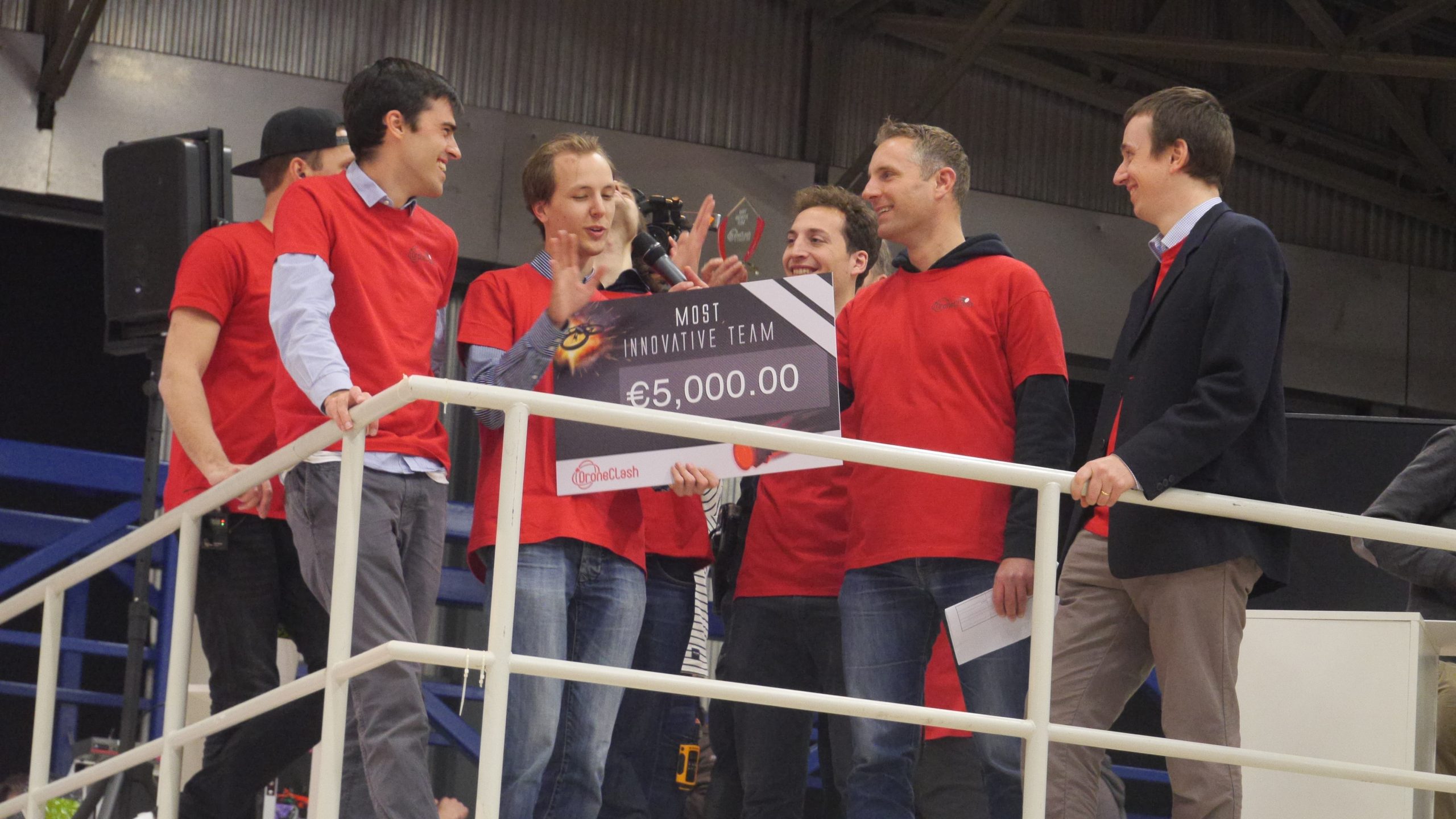

The final, explosive match is between the German team, Dipol, and the Laced Horns from the University of Twente, which wins the game. Will there be another droneclash next year? “If there we will get enough sponsors, we will organise it again next year,” says Remes. And will Deceptidrone try to win first place again? “Yeah sure, but we need to improve our flying skills first!”
TU Delft TV was also at Droneclash. Watch our site closely to see its reportage.
Roos van Tongeren / Redacteur


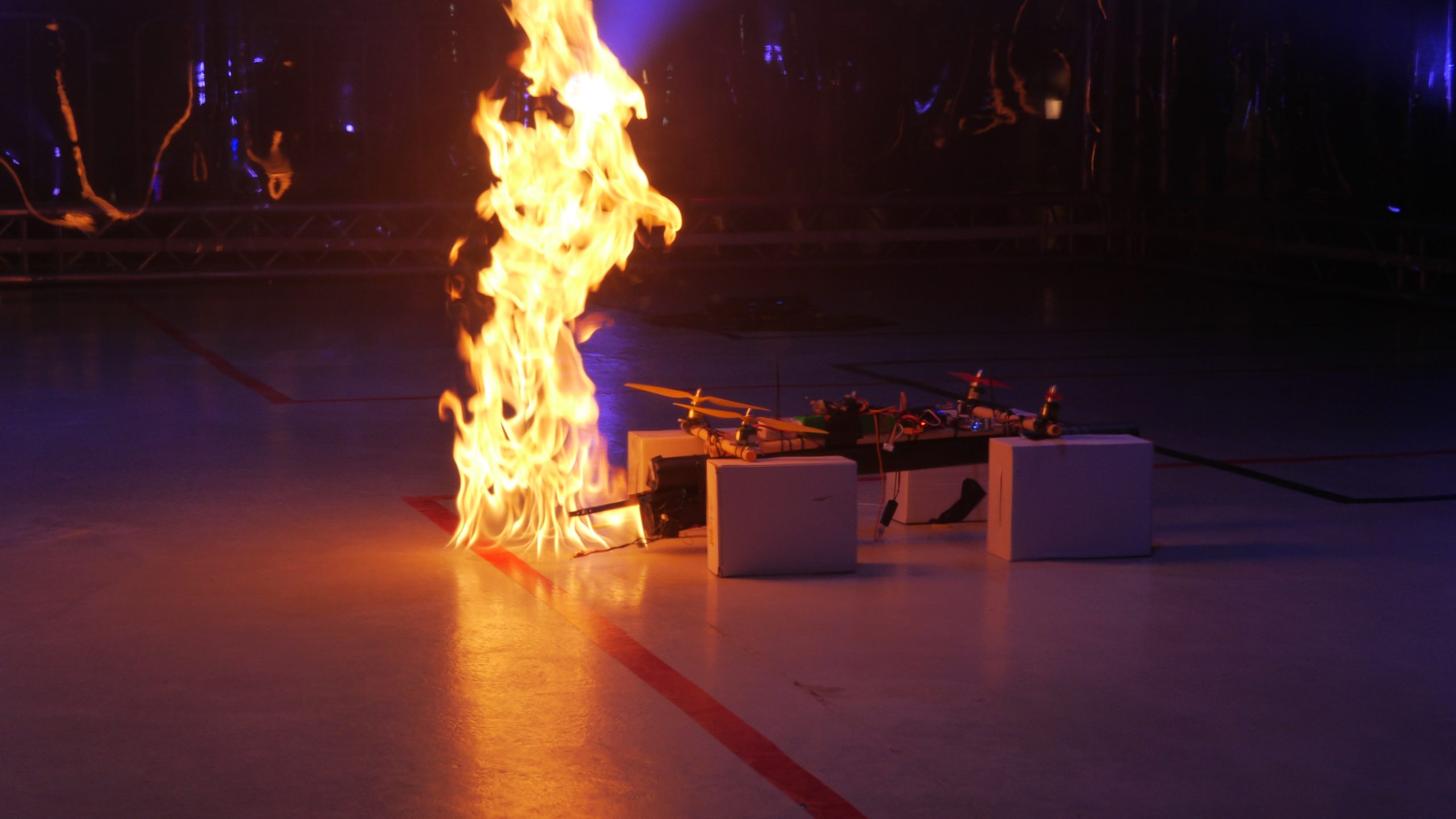
Comments are closed.